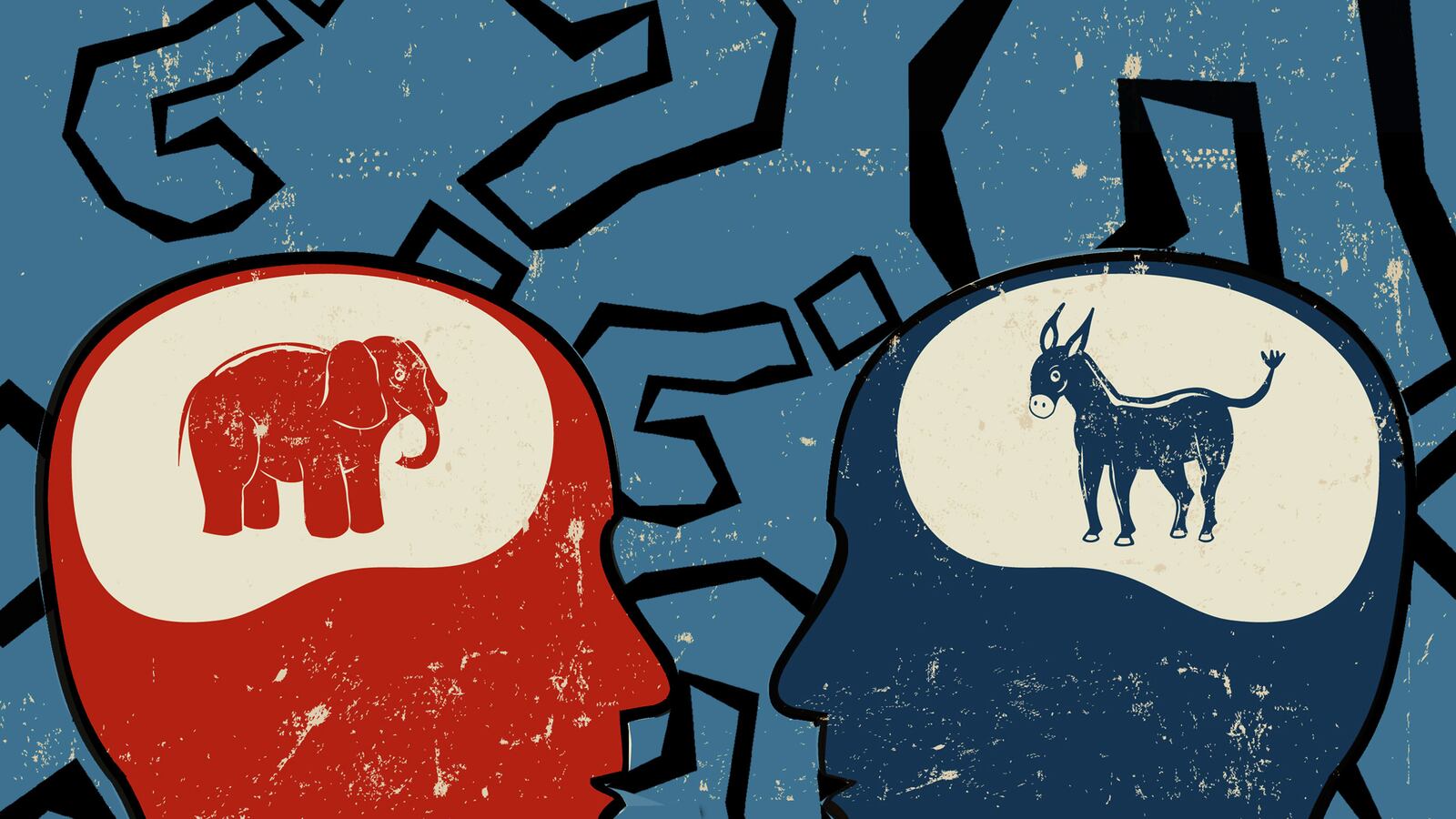It’s almost Election Day. Lawns across the country are planted with yard signs, the television was long ago set to DVR to avoid the onslaught of TV ads.
Anyone in a swing state with a phone is praying the calls from pollsters, the volunteers, and robots will stop.
With just hours left in the worst election ever, it seems like everyone has chosen a side… except for but one, small, shadowy group.
The undecided.
The undecided are a quadrennial riddle, voters who just aren’t ready to choose their adventure after months and months of being pummelled with information (or misinformation) about the candidates seeking the presidency.
So who are these people?
Corrie Hunt, a vice president of Hart Research, who co-conducted the most recent NBC/WSJ poll, said there appear to be more undecideds this year than four years ago. In 2012, their polling had undecided voters at 5 percent. This year, according to their last poll, released on Oct. 16, had undecideds at 9 percent of those surveyed. (It’s a total made up of those who answered neither, other, depends, or not sure.)
And this year, they lean Republican.
“It seems plausible that they could end up breaking more for Republicans if they actually vote,” Hunt said. “But they are less interested in the election too so there are questions on that front.”
She added, “But these of course are based on very small sample sizes so not incredibly reliable.”
Still, in one of the most polarizing, partisan elections in recent memory—these undecideds are both puzzling and completely understandable. Hillary Clinton and Donald Trump are so different, their blood might not even be the same temperature. But they are also the two most disliked and distrusted presidential contenders in recent memory.
According to the Real Clear Politics average, 55 percent view Clinton unfavorably. Trump fares slightly worse, with nearly 58 percent viewing him negatively.
Every election is, to some extent, a choice between the lesser of two evils. But rarely—if ever—have two candidates but viewed as this awful by this many people. No wonder some of them can’t make up their minds.
Mark Mellman, a Democratic pollster, put the number of undecideds at about 7 percent.
“A bit less likely to be Dems though there are some… more likely to be independents who dislike both candidates… and Republicans who don’t like Clinton but can’t abide Trump,” he said, “Some of them will end up not voting, at least for president and some will fall to one candidate or other, but it’s obviously a very tough choice for them.”
It’s true Republicans have had a harder time support their nominee after the bruising primary where Trump not only defeated—but humiliated—several of his opponents. Not to mention he’s made derogatory or offensive comments about women, Hispanics, and many other groups that Republicans had hoped to attract this cycle. There is evidence that in the final stretch Republicans are coming home. According to the latest Washington Post-ABC tracking poll, 87 percent of self-identified Republicans say they are supporting Trump—up four points from the week before. It’s improvement, but not exactly worth a gold star. In the same poll, during a similar time period in 2012, 95 percent of Republicans were aligned behind then-Republican nominee Mitt Romney.
Celinda Lake, a top Democratic pollster, said the fence sitters this time around “are noncollege independents and younger and white.”
That jives with what Nate Silver wrote in an Oct. 25 post on FiveThirtyEight.com, when he estimated that 15 percent of voters have yet to go all in for Clinton or Trump—as opposed to 5 percent at this time last cycle.
He wrote that most of the undecided voters reside in the traditional swing states like Maine, Michigan, Colorado, Iowa, and New Hampshire.
“You might notice that they have something in common: a lot of white voters, and particularly a lot of middle-class whites, which is one group that’s still relatively torn between the candidates,” he wrote.
But state-based pollsters say the samples are so small that this point, it’s hard to pinpoint who exactly they are.
The latest Franklin and Marshall poll in Pennsylvania has Clinton leading Trump 49 percent to 38 percent (PDF)-showed 6 percent of those surveyed were still “making up their mind.”
Madonna said the number was so small, it was hard to know for sure who they were—and cautioned they might not be the only unpredictable factors on Election Day.
“Also don’t forget voters that have a choice but who could still change their minds,” he said.






